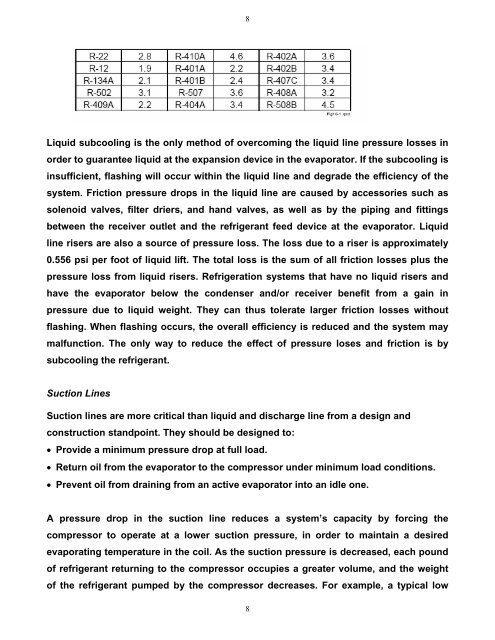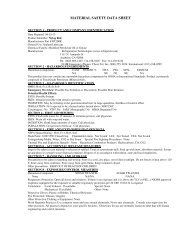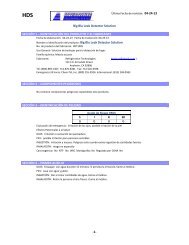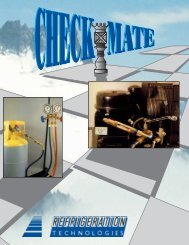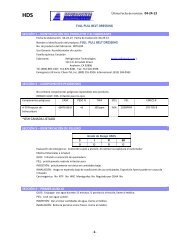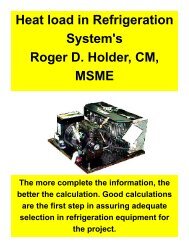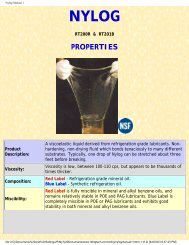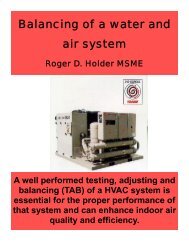Refrigeration Piping Charging Residential AirConditioning R
Refrigeration Piping Charging Residential AirConditioning R
Refrigeration Piping Charging Residential AirConditioning R
Create successful ePaper yourself
Turn your PDF publications into a flip-book with our unique Google optimized e-Paper software.
8<br />
Liquid subcooling is the only method of overcoming the liquid line pressure losses in<br />
order to guarantee liquid at the expansion device in the evaporator. If the subcooling is<br />
insufficient, flashing will occur within the liquid line and degrade the efficiency of the<br />
system. Friction pressure drops in the liquid line are caused by accessories such as<br />
solenoid valves, filter driers, and hand valves, as well as by the piping and fittings<br />
between the receiver outlet and the refrigerant feed device at the evaporator. Liquid<br />
line risers are also a source of pressure loss. The loss due to a riser is approximately<br />
0.556 psi per foot of liquid lift. The total loss is the sum of all friction losses plus the<br />
pressure loss from liquid risers. <strong>Refrigeration</strong> systems that have no liquid risers and<br />
have the evaporator below the condenser and/or receiver benefit from a gain in<br />
pressure due to liquid weight. They can thus tolerate larger friction losses without<br />
flashing. When flashing occurs, the overall efficiency is reduced and the system may<br />
malfunction. The only way to reduce the effect of pressure loses and friction is by<br />
subcooling the refrigerant.<br />
Suction Lines<br />
Suction lines are more critical than liquid and discharge line from a design and<br />
construction standpoint. They should be designed to:<br />
• Provide a minimum pressure drop at full load.<br />
• Return oil from the evaporator to the compressor under minimum load conditions.<br />
• Prevent oil from draining from an active evaporator into an idle one.<br />
A pressure drop in the suction line reduces a system’s capacity by forcing the<br />
compressor to operate at a lower suction pressure, in order to maintain a desired<br />
evaporating temperature in the coil. As the suction pressure is decreased, each pound<br />
of refrigerant returning to the compressor occupies a greater volume, and the weight<br />
of the refrigerant pumped by the compressor decreases. For example, a typical low<br />
8


